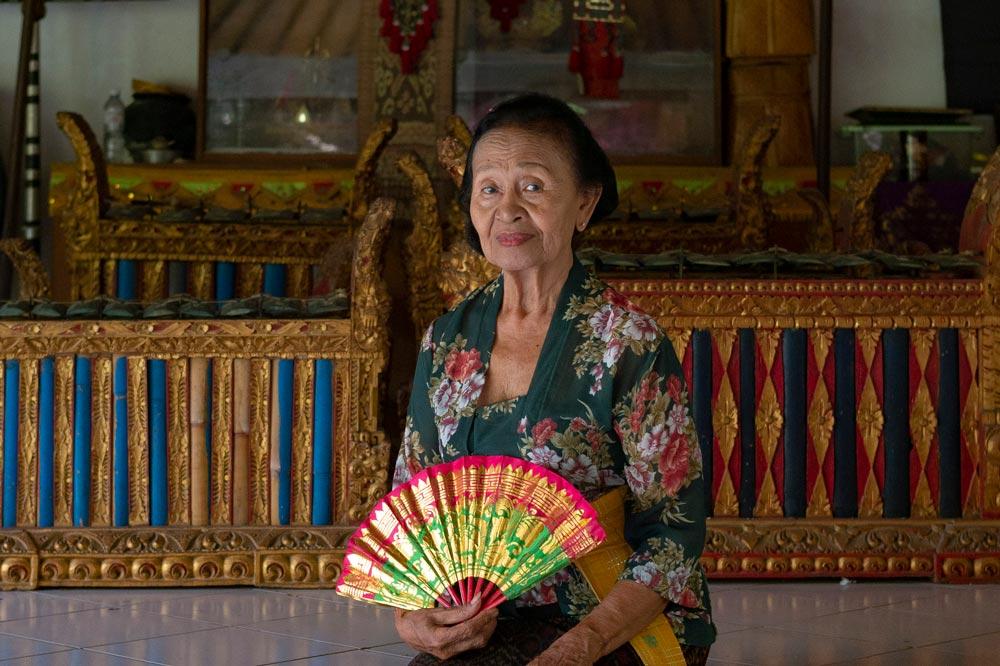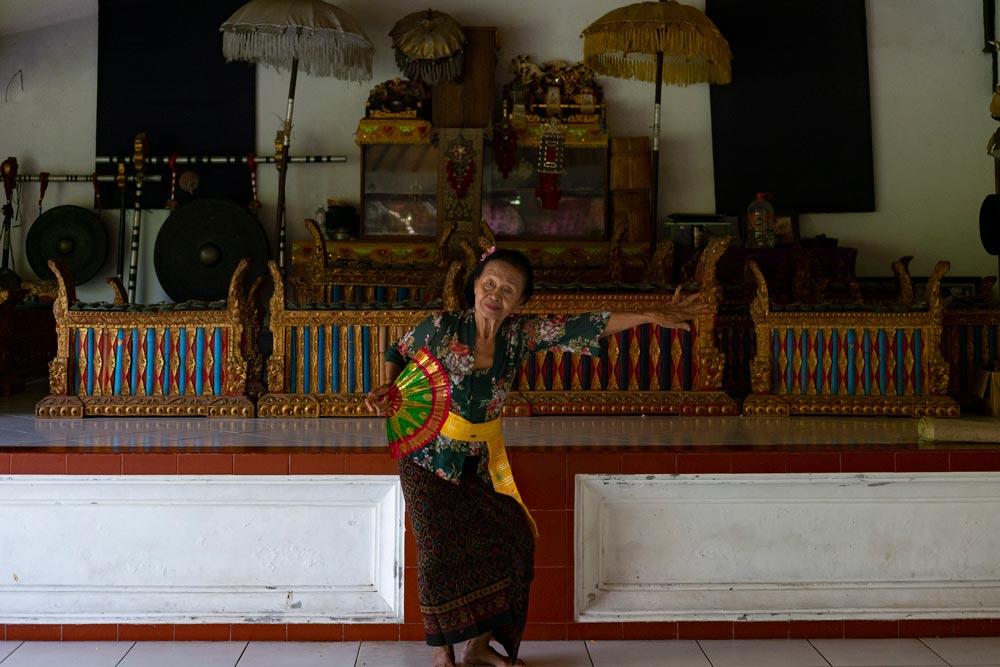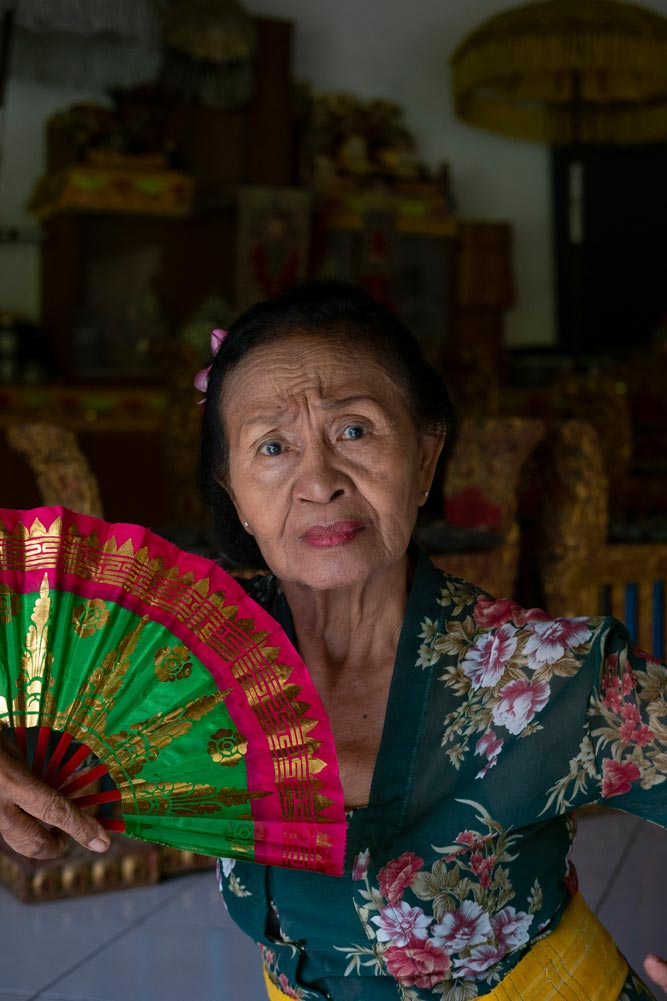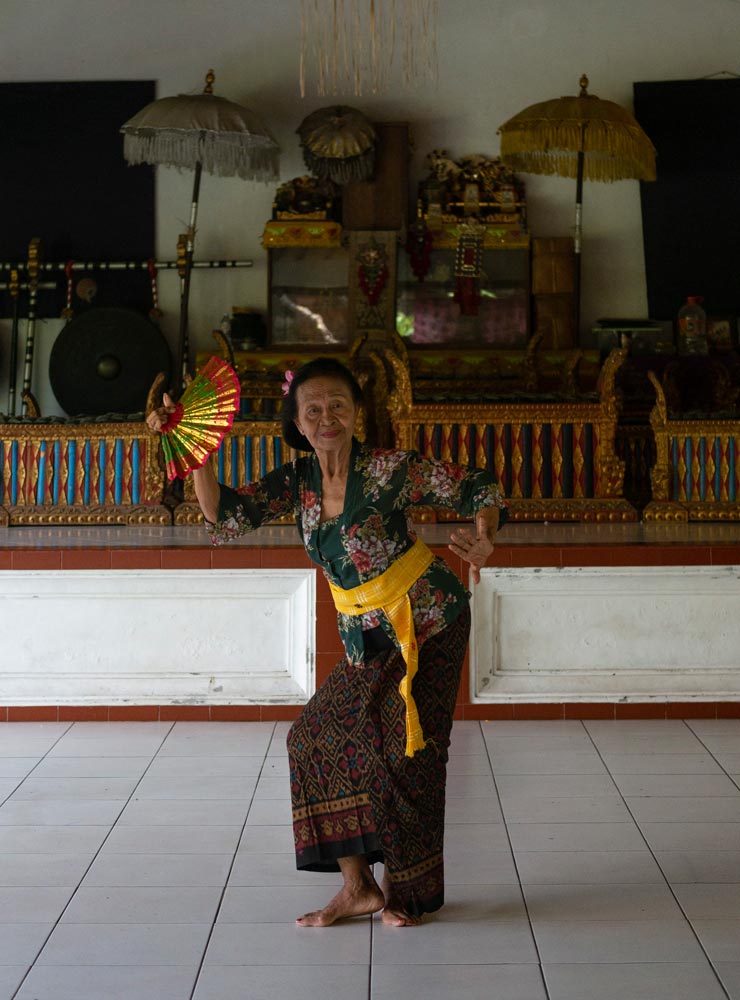
Born in 1943, Ni Ketut Arini is a living legend. Considered a maestro in Balinese classical dances, the now 80-year-old dancer continues to teach at her sanggar in Denpasar, ensuring that young generations of Balinese learn the proper techniques and also continue the legacy of age-old classical dances.
Ibu Arini comes from good musical stock: her father, I Wayan Sapluk, played the gamelan; and her uncle, I Wayan Rindi, was himself a legendary dancer and became Ibu Arini’s first dance teacher when she was seven years old. With the help of other masters, including I Nyoman Kaler and I Ketut Mario, she perfected a range of classical Balinese dances, including the many styles of Legong, and later revived almost forgotten dances like the Margapati and Candrametu.
In 1973, Ni Ketut Arini opened ‘Sanggar Tari Warini’ (Warini Dance Studio) in her house in Denpasar, where for the last 50 years she has been teaching Balinese of all ages the techniques that were once bestowed to her. She continues to teach the classes personally, fit and graceful as ever. She teaches between 100 to 200 students every week, ranging from four years of age to those in their 50s. “Dancing is a form ngayah (worship/service) for us Balinese, so it is imperative that we keep it alive,” says the maestro, who often teaches the ceremonial rejang (for unmarried women) and rejang renteng (for older women) dances. “Dancing cleans and clears our mind, when we dance, we become closer to alam semesta, the universe.”



Though she still performs here and there, Ni Ketut Arini is committed to teaching. “Not all good dancers can teach. When we teach, it’s not about us, it’s not about showing off your skills. We must be aware of the student.” Over the years she has developed her own ways of introducing the foundations of Balinese dance to students, especially the agem (stance) and sledet (eye movements), and making sure classes are fun and engaging for younger children too.
But Ibu Arini is strict in technique, one of her missions is to make sure the dances she knows are preserved through the next generation. “We cannot be lazy and simplify choreography, otherwise over time the original styles will be lost and diluted.” She also mentions that to keep young people motivated, they need places to perform. Her students are always more excited to learn, and about Balinese dance in general, when they are given opportunities to perform, be it at school, their local banjar, a competition, or even in hotels and businesses.










